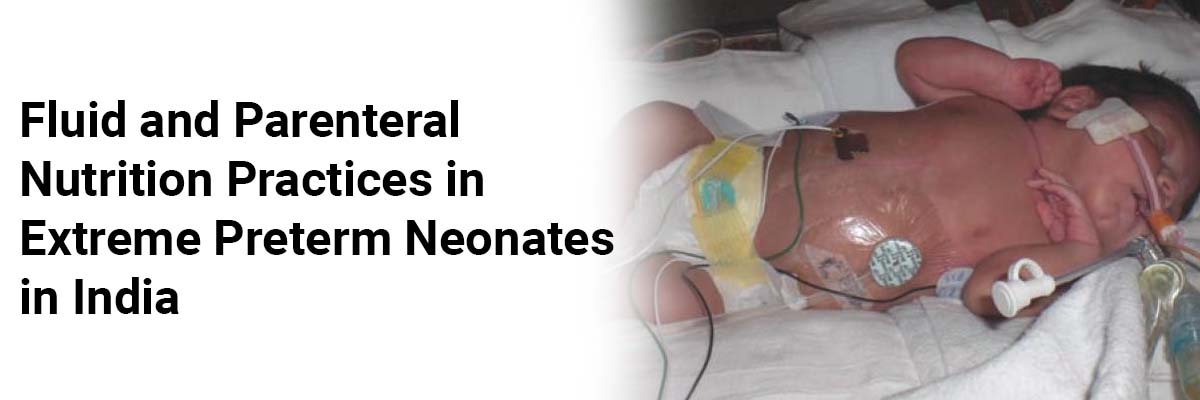
 IJCP Editorial Team
IJCP Editorial Team
Fluid and Parenteral Nutrition Practices in Extreme Preterm Neonates in India
Neonatal care requires meticulous management of fluids, electrolytes,
and nutrition, particularly for extremely preterm neonates who are most
vulnerable. Guidelines vary widely, such as the Australian Consensus Guidelines
suggesting an initial fluid rate of 60 mL/kg/day, with adjustments of 20-30
mL/kg/day. Meta-analyses indicate the benefits of restricted fluids in reducing
certain complications, but the direct application is challenging due to
clinical variability. Titration of fluids is often based on clinical
parameters. High amino acid intake has shown benefits in growth and reducing
retinopathy of prematurity. Lipids play a protective role, yet not all initiate
them on day one.
Inadequate calcium and phosphorus supplementation can lead to metabolic
bone disease; however, many practitioners do not routinely add phosphorus to
parenteral nutrition. Micronutrient supplementation practices also vary, with
some guidelines recommending them from day one, while others suggest after two
weeks of parenteral nutrition.
A recent survey conducted online aimed to ascertain the fluid and
parenteral nutrition practices in extremely preterm neonates across
India.
This web-based survey received input from 123 neonatology practitioners
throughout the subcontinent. Among neonatologists caring for neonates weighing
750-1000 g, 67% favored an initial fluid rate of 80 mL/kg/day. Half of them
adjusted fluid rates if weight loss exceeded 2% per day. Nevertheless, the
practice approaches differed significantly across various contexts.
The findings highlight the necessity for guidelines tailored to specific
clinical circumstances. Traditionally, a weight loss of 10-15% is deemed
acceptable in preterm neonates. Some authors consider a postnatal weight loss
of less than 6% indicative of inadequate diuresis. The results supported these
estimates – with 63% indicating that a weight loss of 11-15% is ideal. Preferences
for daily weight loss varied, with 45% favoring 1-2% and 43% opting for 2-3%.
The wide range of practices observed underscores significant variability. Consensus was not achieved on any question, emphasizing the urgency of developing comprehensive practice guidelines applicable across diverse settings. This is particularly crucial given the critical role of parenteral nutrition in this vulnerable population. In the surveyed practitioners, almost half reported not routinely adding micronutrients to total parenteral nutrition––with some opting to do so only for prolonged parenteral nutrition needs.
Source: Chinnappan A, Sahoo T, Mohanty P, Som T, Devi U. Indian Pediatrics. 2024 Feb;61(2):171-4.

IJCP Editorial Team
Comprising seasoned professionals and experts from the medical field, the IJCP editorial team is dedicated to delivering timely and accurate content and thriving to provide attention-grabbing information for the readers. What sets them apart are their diverse expertise, spanning academia, research, and clinical practice, and their dedication to upholding the highest standards of quality and integrity. With a wealth of experience and a commitment to excellence, the IJCP editorial team strives to provide valuable perspectives, the latest trends, and in-depth analyses across various medical domains, all in a way that keeps you interested and engaged.




















Please login to comment on this article